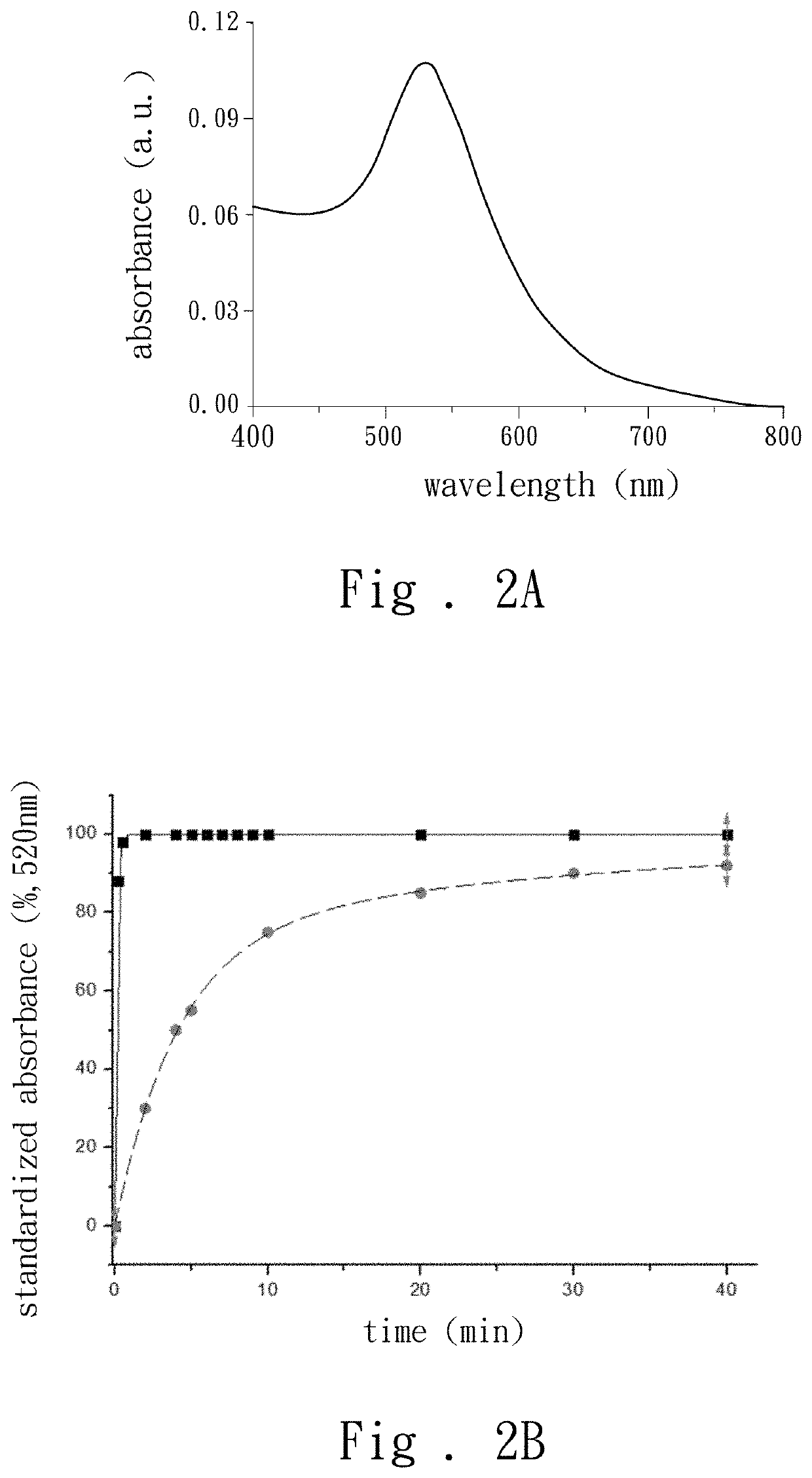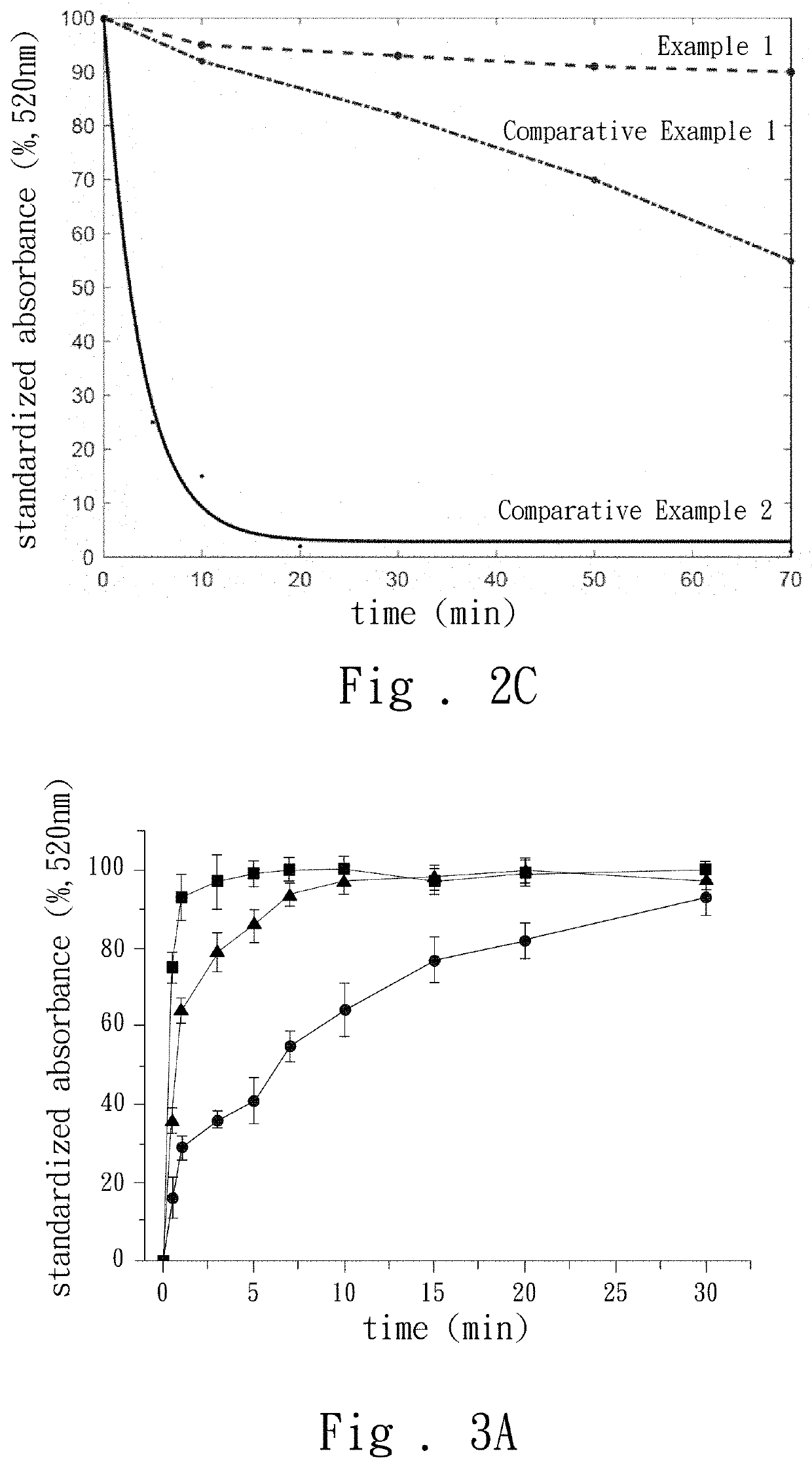Compound containing thioester group for modifying substrate surface and method using the same
a technology of thioester group and substrate surface, which is applied in the field of compound containing thioester group for modifying can solve the problems of noble metals that cannot be immobilized to the surface of the substrate in pure water or an aqueous solution, and the inability to modify in a wet state, so as to achieve the effect of quick surface modification
- Summary
- Abstract
- Description
- Claims
- Application Information
AI Technical Summary
Benefits of technology
Problems solved by technology
Method used
Image
Examples
example 1
[0038](3-mercaptopropyl)trimethoxysilane and di-tert-butyl dicarbonate are placed in a beaker containing an acetonitrile solvent to react for 12 hours to obtain an intermediate product; then, the intermediate product is purified by extraction at room temperature; the purified intermediate product and triethanolamine are placed in a toluene solution to react for 6 hours to obtain a tert-butoxycarbonyl thioester alkylated silatrane; dimethyl sulfoxide is added to prepare a standard solution with a concentration of 1M, and the standard solution is stored; the standard solution is diluted 1,000 times in ethanol to prepare a surface modification solution A with a final concentration of 1 mM; and the surface modification solution A is dip-coated on a glass to react for 30 minutes, then the glass is rinsed with deionized water and alcohol, and dried by cold air to obtain a surface-modified glass.
example 2
[0039]The surface modification solution A is prepared in the same manner as in Example 1, and the surface modification solution A is dip-coated on a polymer material to react for 30 minutes, and then the polymer material is rinsed with deionized water and alcohol, and dried by cold air to obtain a surface modified polymer material.
example 3
[0043]The surface-modified glass of Example 1 is placed in an ethanol solution to react with gold nanoparticles. The absorbance at a wavelength of 520 nm is measured by an ultraviolet-visible light spectrometer after different reaction times; and after 30 minutes of reaction, the absorbances at various wavelengths are measured by an ultraviolet-visible light spectrometer.
PUM
| Property | Measurement | Unit |
|---|---|---|
| carbon number | aaaaa | aaaaa |
| pH | aaaaa | aaaaa |
| wavelength | aaaaa | aaaaa |
Abstract
Description
Claims
Application Information
 Login to View More
Login to View More - R&D
- Intellectual Property
- Life Sciences
- Materials
- Tech Scout
- Unparalleled Data Quality
- Higher Quality Content
- 60% Fewer Hallucinations
Browse by: Latest US Patents, China's latest patents, Technical Efficacy Thesaurus, Application Domain, Technology Topic, Popular Technical Reports.
© 2025 PatSnap. All rights reserved.Legal|Privacy policy|Modern Slavery Act Transparency Statement|Sitemap|About US| Contact US: help@patsnap.com



